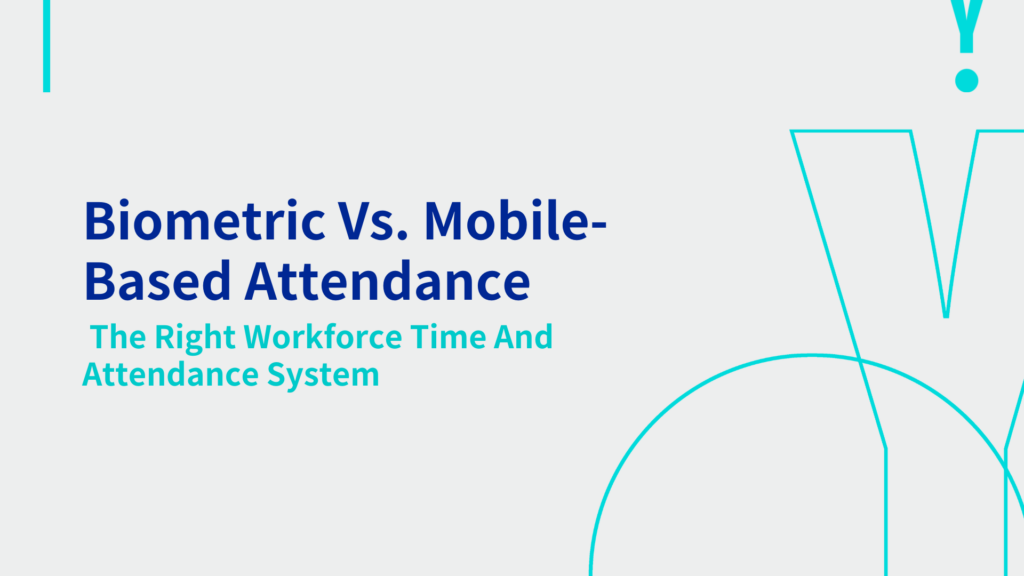
Tracking employee attendance accurately is vital for business productivity, compliance, and workforce management. Traditional methods often create inefficiencies, inaccuracies, and frustrations. As organizations expand, manual systems fail to provide real-time visibility. Businesses must adopt smarter tools to manage today’s increasingly mobile and diverse workforce.
Attendance technology now offers two leading options; these are biometric systems and mobile-based platforms. Both workforce time and attendance systems enhance accuracy, reduce fraud, and improve compliance. However, their suitability depends on organizational goals, workforce distribution, and operational needs. Biometric systems prevent buddy punching through fingerprint or facial recognition. Mobile-based platforms provide flexibility, especially for remote or field employees.
Therefore, choosing the right solution requires balancing convenience, cost, scalability, and integration with existing software.
- Workforce Time And Attendance System – Shift from Manual to Automated
- Why Do Manual Systems Fail?
- Need for Smarter Solutions
- Understanding Biometric Attendance Systems
- Exploring Mobile-Based Attendance Systems
- How Does Attendance Software Unify Biometric And Mobile Systems?
- Comparing Biometric And Mobile-Based Attendance Systems
- Benefits of Attendance Software for Businesses
- Best Practices for Choosing The Right Attendance Technology
- Final Thoughts
Workforce Time And Attendance System – Shift from Manual to Automated
Manual registers or swipe cards once dominated attendance tracking. However, these outdated methods often lacked accuracy and exposed businesses to payroll fraud.
Why Do Manual Systems Fail?
Manual systems rely on human input, increasing risks of manipulation or errors. Employees can easily mark attendance for absent colleagues. Additionally, data entry consumes valuable administrative time. Managers spend hours reconciling attendance records, delaying payroll processing and performance evaluations.
Need for Smarter Solutions
Businesses today demand transparency, accountability, and real-time workforce visibility. Automated attendance technologies meet these needs effectively, delivering data accuracy and actionable insights.
Attendance software integrates seamlessly with payroll, HR, and compliance systems, enabling businesses to streamline operations and ensure workforce efficiency.
Understanding Biometric Attendance Systems
Biometric systems authenticate employees using unique physical characteristics. Fingerprints, iris scans, or facial recognition ensure accurate identity verification.
Strengths of Biometric Attendance
Biometric systems along with attendance management software prevent buddy punching by requiring physical presence. Employees cannot manipulate attendance records. Accuracy improves, ensuring payroll reflects actual working hours. Additionally, biometric devices support compliance by maintaining verifiable employee attendance logs. Hence, this reduces disputes and simplifies audit processes significantly.
Limitations of Biometric Systems
Despite accuracy, biometric systems present challenges.
- Devices require installation, maintenance, and calibration.
- Costs increase for large organizations with multiple locations.
- Moreover, physical contact-based systems pose hygiene concerns, particularly post-pandemic. Employees may hesitate to use shared fingerprint scanners, reducing adoption.
Exploring Mobile-Based Attendance Systems
Mobile attendance leverages smartphones to record employee presence. Apps often use GPS, Wi-Fi, or QR codes for real-time attendance verification.
Strengths of Mobile-Based Systems
Mobile systems offer flexibility for remote employees, freelancers, or field workers. Attendance is trackable anywhere, eliminating location-specific limitations. Additionally, these platforms provide self-service features.
As a result, employees can check schedules, request leave, and view attendance history, improving engagement and transparency.
Limitations of Mobile Attendance
- However, mobile systems depend on internet connectivity. Weak networks may affect accuracy.
- Furthermore, GPS-based tracking can sometimes raise privacy concerns.
- Businesses must also manage device compatibility, data security, and misuse risks when adopting mobile attendance solutions.
How Does Attendance Software Unify Biometric And Mobile Systems?
Standalone systems create gaps. Our workforce time and attendance system software bridges both biometric and mobile solutions, centralizing data into one platform.
Centralized Data Management
Attendance software consolidates attendance data across biometric devices and mobile apps. Therefore, managers access unified dashboards for real-time workforce visibility. Hence, it eliminates data silos, ensuring consistency across departments. Payroll teams benefit from accurate, consolidated attendance records.
Seamless Payroll Integration
Integration with payroll systems ensures error-free salary calculations. Attendance software eliminates discrepancies, reducing payroll disputes and administrative workload significantly.
As a result, organizations enhance compliance and maintain employee trust.
Scalability & Flexibility
Attendance software scales easily with organizational growth. So, whether expanding offices or hiring remote staff, systems adapt seamlessly. Businesses can configure policies, assign permissions, and customize workflows, ensuring alignment with evolving workforce structures.
Comparing Biometric And Mobile-Based Attendance Systems
When selecting the right attendance technology, businesses must evaluate suitability across different parameters.
- Accuracy & Reliability: Biometric systems excel in accuracy, requiring physical verification. Mobile systems, while flexible, can face connectivity or location accuracy issues.
- Workforce Suitability: Biometric suits on-site employees within fixed premises. Mobile systems better serve remote teams, field employees, or organizations embracing hybrid work models.
- Cost Considerations: Biometric systems involve higher upfront investment in devices. Mobile solutions reduce infrastructure costs but may require software licensing and connectivity management. So, affordable attendance management software could help in this case.
- User Experience: Biometrics provides quick, hassle-free verification. Mobile apps enhance engagement with additional features like leave management and shift scheduling.
Benefits of Attendance Software for Businesses
Adopting attendance software alongside biometric or mobile systems delivers significant organizational advantages.
Enhanced Transparency
Centralized dashboards provide real-time insights into employee availability. Managers track absenteeism, overtime, and workforce utilization effortlessly. Transparency supports strategic decision-making and strengthens accountability across teams.
Improved Compliance
Automated records support compliance with labor laws and regulations. Attendance software generates detailed reports for audits, thus ensuring legal and financial safeguards.
Employee Empowerment
Self-service features empower employees. They properly access attendance history, manage requests, and receive notifications, improving engagement and satisfaction.
Data-Driven Insights
Advanced analytics highlight trends in workforce behavior. Managers identify patterns, address absenteeism, and optimize staffing for maximum productivity.
Best Practices for Choosing The Right Attendance Technology
Making the right decision requires strategic evaluation.
- Assess Workforce Needs
Analyze workforce distribution, mobility, and industry requirements. Remote-heavy organizations may prioritize mobile solutions, while fixed workplaces benefit from biometric systems.
- Consider Integration Capabilities
Ensure the chosen system integrates with HR, payroll, and compliance platforms. Integration reduces duplication as well as boosts operational efficiency.
- Evaluate Security Measures
Both biometric and mobile systems involve sensitive data. Strong encryption, role-based access, and compliance certifications are critical considerations.
- Plan for Scalability
Choose attendance software that scales with business expansion. Consequently, flexible solutions save long-term costs and prevent future disruptions.
Final Thoughts
Biometric and mobile-based attendance systems each offer unique advantages. The right choice depends on workforce structure, compliance needs, and scalability goals. However, attendance software plays a crucial role by unifying both systems, streamlining payroll, and providing valuable workforce insights.
Therefore, by adopting the right workforce time and attendance system, businesses achieve transparency, improve compliance, and enhance employee engagement. Most importantly, they position themselves for sustainable workforce efficiency.
Attendance management is not just a compliance necessity. It is a strategic enabler for building trust, driving productivity, and supporting growth. So, as a business owner, if you want an efficient workforce attendance system, visit YOOV today.
Connect with YOOV

WhatsApp:Click Here
Email:hello@yoov.com
Website:https://www.yoov.com/